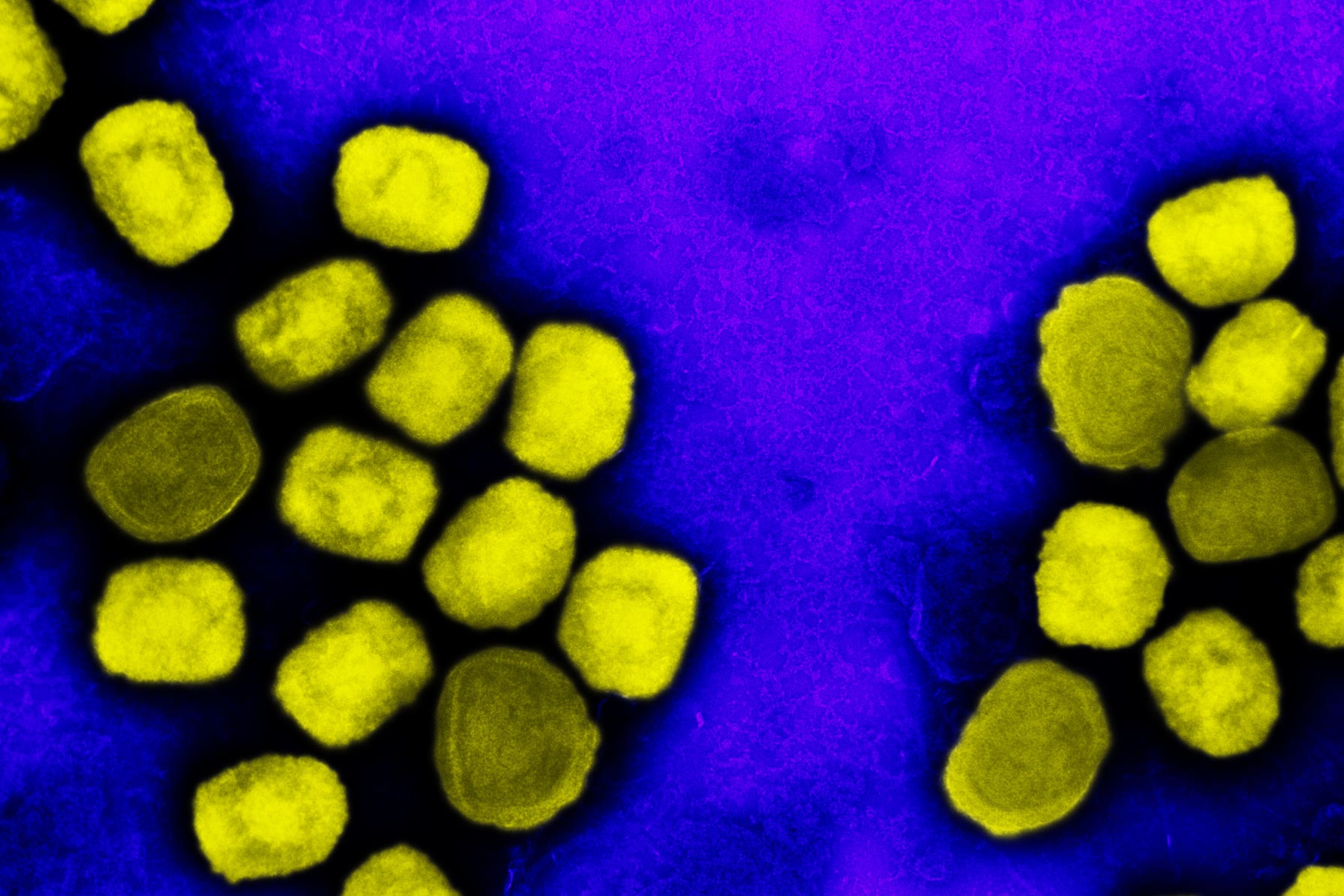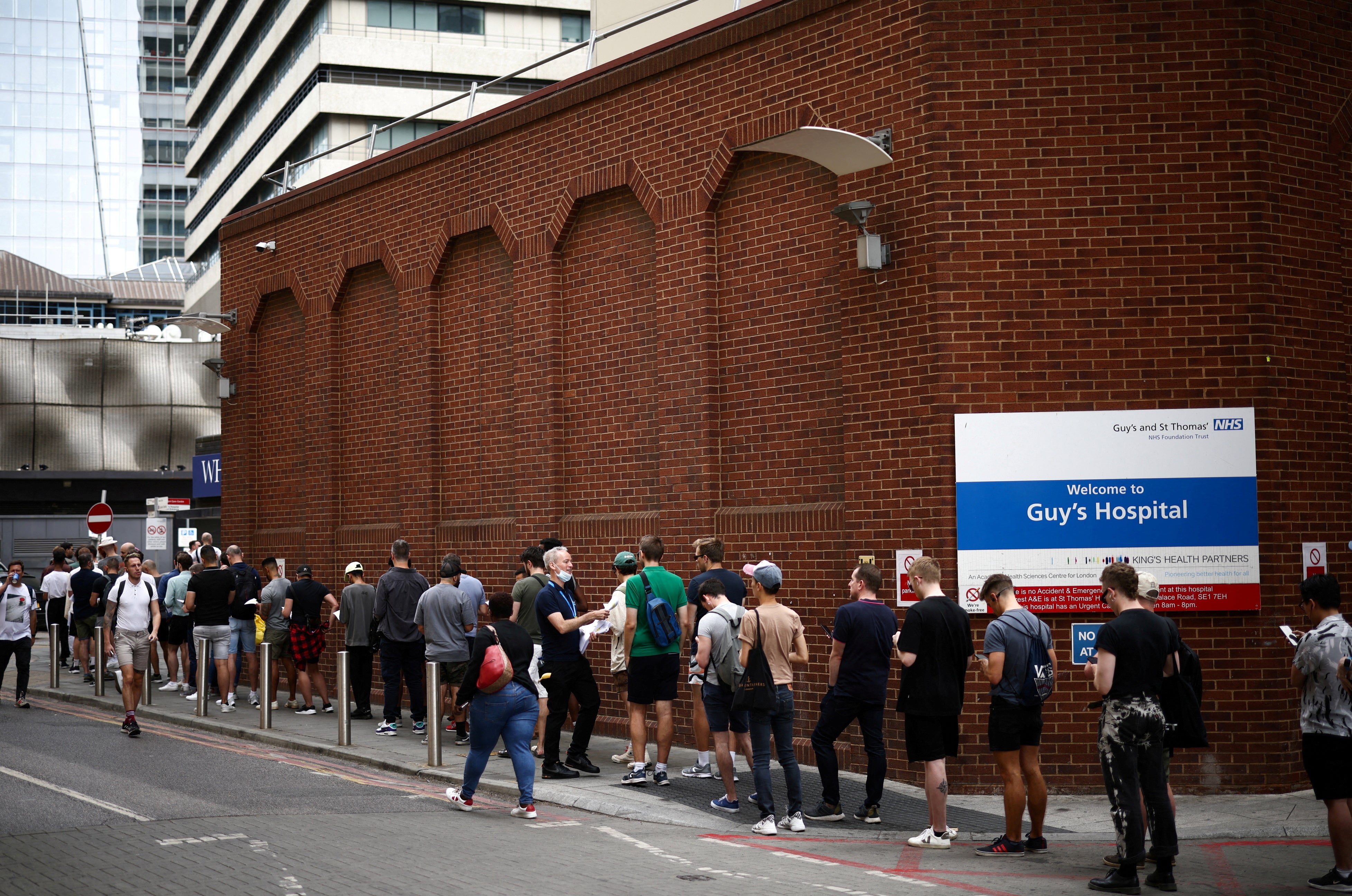Monkeypox symptoms ‘take up to four days to appear’
Evidence suggests isolation order less effective at stopping spread than thought

Your support helps us to tell the story
From reproductive rights to climate change to Big Tech, The Independent is on the ground when the story is developing. Whether it's investigating the financials of Elon Musk's pro-Trump PAC or producing our latest documentary, 'The A Word', which shines a light on the American women fighting for reproductive rights, we know how important it is to parse out the facts from the messaging.
At such a critical moment in US history, we need reporters on the ground. Your donation allows us to keep sending journalists to speak to both sides of the story.
The Independent is trusted by Americans across the entire political spectrum. And unlike many other quality news outlets, we choose not to lock Americans out of our reporting and analysis with paywalls. We believe quality journalism should be available to everyone, paid for by those who can afford it.
Your support makes all the difference.People catch monkeypox as many as four days before showing symptoms, scientists have discovered.
In the first evidence of its kind, UK Health Security Agency (UKHSA) researchers said the number of infected people transmitting monkeypox before symptoms arise might be much higher than previously thought.
More than half (53 per cent) of transmission was estimated to occur before the infector showed symptoms, meaning asking people to isolate after noticing symptoms will often prove ineffective. Contact tracing may also be less effective than thought.
The UKHSA concluded that people would need to isolate for 16 to 23 days to detect 95 per cent of those with a potential infection.
Symptoms of monkeypox vary between people but include rash, fever, chills, swollen lymph nodes, exhaustion and headache.
Health authorities are offering a smallpox vaccine to people at highest risk from mokeypox, as the viruses that cause the two diseases are similar.
More than 45,000 people have received a dose of the vaccine, including more than 40,000 gay, bisexual and other men who have sex with men. These groups have the highest risk of exposure to monkeypox.
As of 24 October, there had been 3,548 confirmed and 150 “highly probable” monkeypox cases detected in the UK. No deaths have been reported.
The number of new daily cases peaked in July at more than 60 but has been falling since, with fewer than 15 cases per day on average in early September.

Commenting on the new study, Dr Nachi Arunachalam, monkeypox incident director at the UKHSA, said: “Throughout this outbreak we’ve continuously reviewed and gathered data and evidence to better understand the transmission of the monkeypox virus, ensuring our response is evidence-based.
“This modelling suggests there may be some transmission of monkeypox when people are pre-symptomatic or before they recognise they have symptoms, but there is still more work needed to understand pre-symptomatic and asymptomatic infections and what that might mean for future policies and management of the monkeypox outbreak.
“Whilst we continue to see fewer cases reported in the UK, it remains vital people are alert to the risk monkeypox poses and take action to protect themselves and others.
“Vaccination plays a crucial role in this so I would encourage those at highest risk to come forward and get your first dose.”
The new study, published in the British Medical Journal, included 2,746 people who tested positive for monkeypox in the UK between 6 May and 1 August.
People were aged 37.8 years on average and 95 per cent reported being gay, bisexual, or other men who have sex with men.
Join our commenting forum
Join thought-provoking conversations, follow other Independent readers and see their replies
Comments